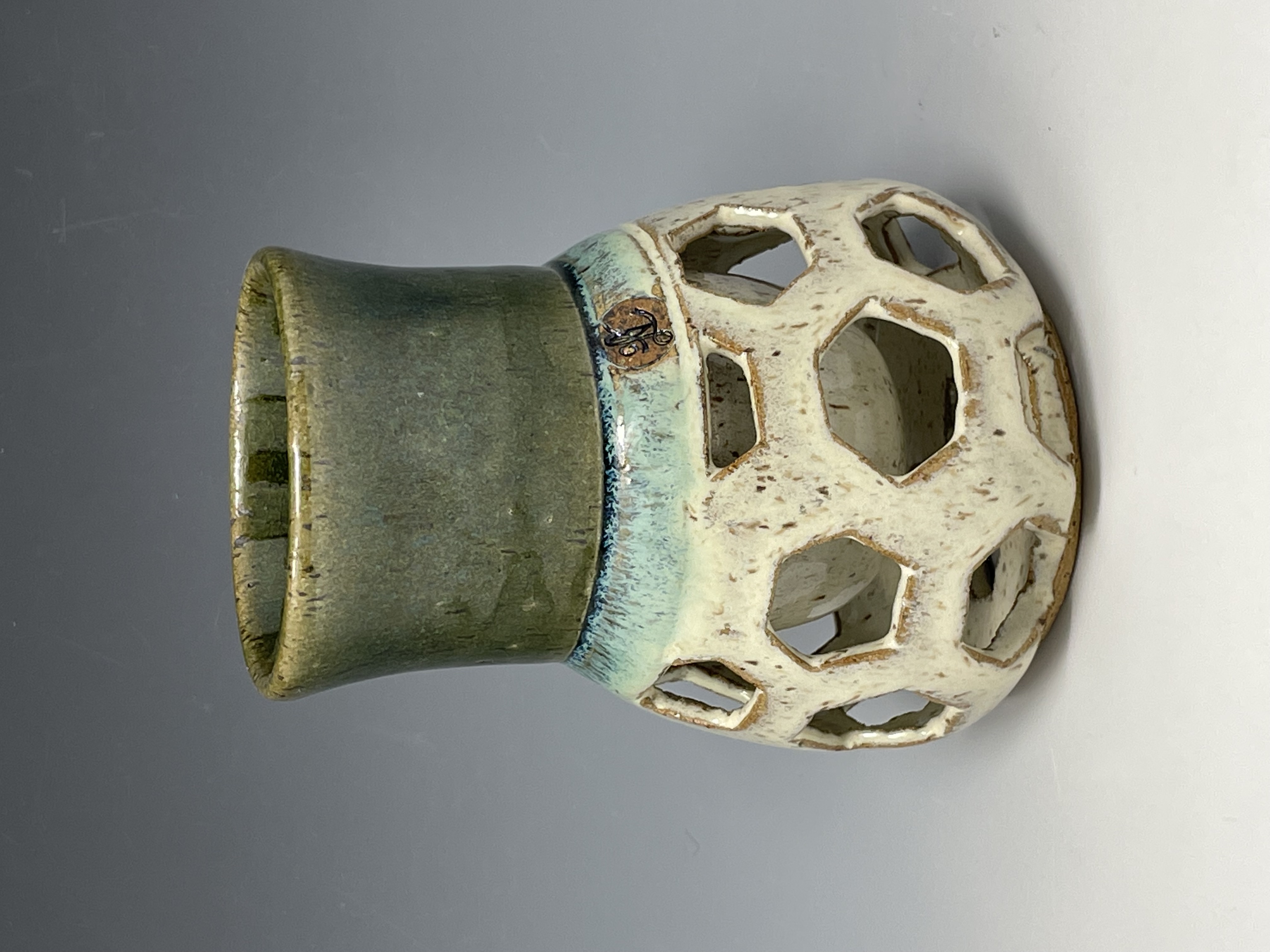Making Your Own Pottery Glazes – Step by Step
This article is probably of interest to you because you are producing pottery and interested in making your own glazes. You are in the right place! Making your own glazes will save you money and it will give your work that unique look you are searching for.
Here is a list of supplies you will need to get started.
- Glaze recipe
- 3 Round buckets with lids. I use mostly 5 gallon Walmart bucket (the sieve fits perfectly on top of these buckets)
- Sieve – This needs to be a mesh size of 80 or finer. They are available from ceramics suppliers.
- Drill
- Paint mixer drill attachment- available at most paint stores or online
- Respirator with p100 rated filter – The cheap dust masks from DIY stores are not suitable for the fine particle sizes of glaze ingredients. They are available at ceramic suppliers.
- Gram Scale. It is very very important to have an accurate scale (you get what you pay for). I use a Triple Beam 700 Mechanical Balance with the extra weight set, but you can also go digital.
- Rubber spatula

Step by step instructions
- Put on the dust mask.
- Locate each material in your recipe and make sure you have enough of it.
- Clean the scale and make sure it’s properly balanced before you begin work.
- Place the measuring container for weighing your materials on the scale. With no materials in the container, the indicated weight should be set at zero point. If not, adjust the tare compensation of the scale so that it reads zero.
- Weigh your first material.
- Place it in the container that you will use to mix the glaze.
- Weigh out each successive material and place it in the mixing container.
- Add enough water to make a mixture the thickness of cream. Don’t add too much water. You can add more at the end when you have checked your specific gravity.
- Mix the glaze with the drill and mixer attachment. If you don’t have one you can use a stirring stick or a wire whisk. Once the glaze is properly mixed with water, you may remove your mask.
- Place a sieve on top of another bucket container.
- Pass the glaze mixture through the sieve (you can use a stiff brush to force the glaze through the sieve). This homogenizes the mixture and gets rid of any lumps.
- Move the sieve over to the original mixing container and pour the glaze through the sieve once more. Sieving insures a smooth mixture. Do this a total of three times.
- Check your specific gravity. You want to be very consistent with the specific gravity of each each glaze you do. Having it too high or too long can change your glazes so it runs, or it is too thin or even change the color completely.
- Make a label for the glaze and place it on the container and the lid that it will stay in.
Now that you have a new glaze the fun starts…. glaze testing! Testing will show you how your new glaze reacts with your other glazes, your firing schedule and your clay body. Enjoy


This is great information, thank you for sharing and I am looking forward to more!